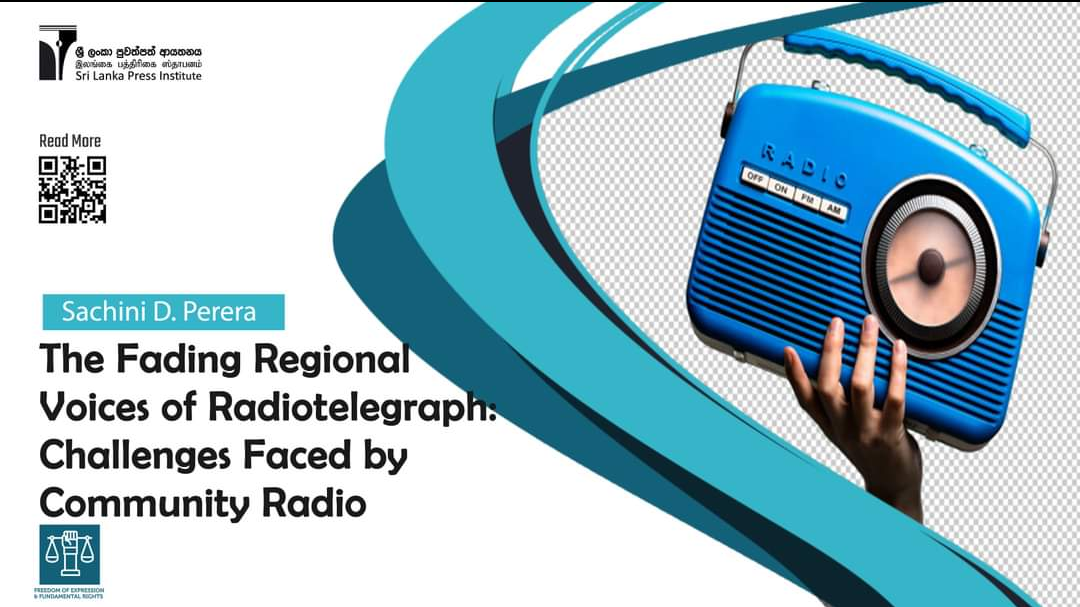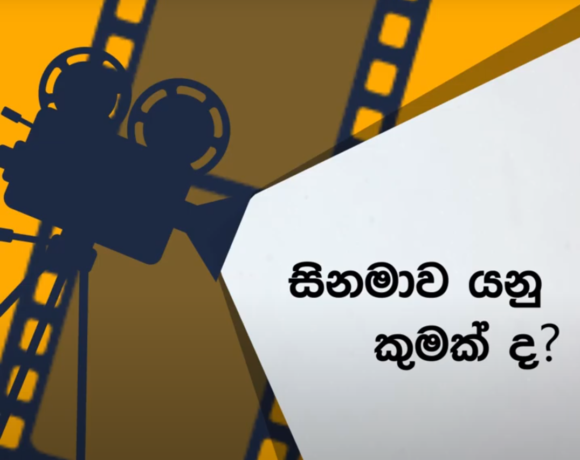
The Fading Regional Voices of Radiotelegraph: Challenges Faced by Community Radio
Sachini D. Perera
Apart from commercial radio and public service broadcasting (PSB) radio, community radio is the third most widely used form of radio service. These radio services are primarily aimed at a community living within a single territorial boundary or for a community interested in starting and maintaining a community radio service. The content of the radio services of this format is tailored to the needs of the targeted listeners. It is the entire community that operates and owns the community radio service. That community often does not do this service expecting a revenue. They want their stories, experiences and problems aired on the radio stations they run, to let others know and to find collective solutions.
In the early ‘80s, the first radio station in South Asia was established in Sri Lanka near the Mahaweli region. Mahaweli Community Radio, Sri Lanka’s inaugural community radio station was launched in 1983 by UNESCO in collaboration with the Sri Lanka Broadcasting Corporation (SLBC) and the Mahaweli Authority, the United Nations Development Program (UNDP) and the Danish International Program. Under the Mahaweli Community Radio service, other radio stations were also established in Girandurukotte (1985), Mahailluppallama (1987) and Kotmale (1988). In addition, the Uva Community Radio Service and the ‘Saru’ Community Radio Service are operating under the control of the SLBC as Community Radio Stations.
The main objective of a community radio station is to strengthen community, minorities and marginalized groups. Furthermore, it fosters social service, the achievement of social goals, strengthening of social interaction and so on. The community radio services in other countries are in accordance with their relevant necessities and needs. However, maintaining a community radio service is not an easy task. There are some common problems and challenges that arise in a community radio service. Some of these are:
(1) Political interference
(2) Problems between the stakeholders
(3) Economic problems
And complexities such as challenges to editorial independence, ownership and sustainability of a community radio service do have solutions.
Media freedom is an essential scope for the existence of journalism. Which is mostly restricted due to political influence. This greatly affects community radio services because they are small media outlets and have limited ability to stand up against these external impacts. It directly damages the ownership of the media institutions as well.
The increasing potential for radio frequencies to be sold to commercial radio services owned by commercial authorities has threatened the sustainability of community radio. Another problem is the lack of financial support and demands of donors. It drives the context or setting of the programs according to the financial contributors’ will which affects media freedom as well. On the other hand, even finding investors for well-organized and well-informed community radio programs have become a daunting task today. As investors are looking for an opportunity to invest in media programs that benefit them, the responsibility of journalism to ensure that the experience of a program is relevant, sensitive, impartial and fair to the target community is declining. Due to these circumstances, the voice of some of the regional communities have become inaccessible to the government and the country.
Further, Community Radio Stations in Sri Lanka are operated under a government monopoly through the Sri lanka Broadcasting Corporation (SLBC). Therefore, the concept of community radio has collapsed. By involving the villagers or community as correspondents of the relevant community radio station, the station work would be impartial, efficient and have a strong commitment to the work in order to maintain a minimum risk level from political intervention. Educated and interested youth in the area, in particular, can be used extensively for this purpose. This makes it a job opportunity or provides good professional experience that they need to be trained in. Also, such people should be provided with knowledge and understanding of all equipment in a radio station as it is essential to maintain a community radio station with technical understanding as well.
But this is also a course of action that must be well planned and implemented. This is because a community power struggle among the general public is likely to take place as the community radio services themselves are more likely to be open to the general public. Delivering a community radio service to 100% of the community can also be a bit of a crisis. As a solution to the problem, a supervisory committee may be appointed or the relevant volunteer staff may be transferred from time to time. Moreover, by appointing trained university students as public relations officers and making them co-operate with the community, many potential crises can be averted. This is because educated youth are friendlier with the community by being more intimate than those who are in higher positions.
Many countries and global regions such as Kenya, South Africa, Ecuador, Jamaica, Indonesia and the United States of America still use the communication power behind community radio service to assist in national and regional development projects. Some local experts have already submitted proposals to use local community radio services in Sri Lanka for development goals. But, still no actions have been implemented towards this after the biggest development project, “Mahaweli Community Radio” (MCR) was launched.
Another problem that exists for many community radio stations is that external forces interfere with the media freedom of the institutions due to the failure to maintain legal documents and records. As a solution to this, the following are required:
(1) A constitution containing laws and regulations tailored and applicable to the media institution
(2) A set of internal/ organizational general rules
(3) A written procedure for problematic situations
(4) Agreements
(5) Personal employee performance reports, etc. to be put forward in case of an emergency. This will be able to present legal actions in cases of media harassment and as evidence of wrong-doing for the benefit of the media personnel.
At present, the reason for the gradual loss of audience attraction to community radio services is the listener’s prevailing demand for state and commercial radio services. The solution is to promote community radio services that make a significant contribution to community development through popular state and private radio services that most listeners listen to.
Due to the proliferation of electronic media, commercial channels, mobile phones and social media trends we see today, the focus on the excellent service rendered by community radio is declining in society. It sounds like the nostalgic feeling for community radio culture no longer prevails. Establishing an enormous development of community radio stations can highly facilitate a sustainable radio culture in Sri Lanka. With its agenda and specific objective of community development and addressing the particular concern of the community, its existence should be taken into consideration and be implemented on a better journalistic and practical level. Community radio journalism is a vibrant information system and an information bridge to drag in sustainable development goals of our country.








